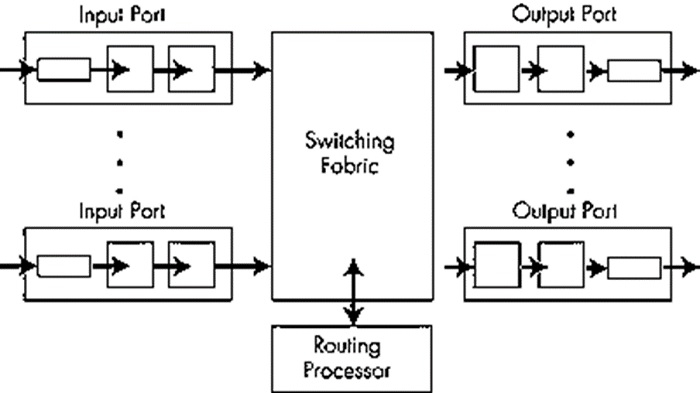
 Data Structure
Data Structure Networking
Networking RDBMS
RDBMS Operating System
Operating System Java
Java MS Excel
MS Excel iOS
iOS HTML
HTML CSS
CSS Android
Android Python
Python C Programming
C Programming C++
C++ C#
C# MongoDB
MongoDB MySQL
MySQL Javascript
Javascript PHP
PHP
- Selected Reading
- UPSC IAS Exams Notes
- Developer's Best Practices
- Questions and Answers
- Effective Resume Writing
- HR Interview Questions
- Computer Glossary
- Who is Who
What is router architecture?
Router architecture is designed in a way that the routers are equipped to perform two main functions. These functions are as follows:
Process routable protocols.
Use routing protocols to determine the best path.
Let us try to understand the router with the help of architecture:
Architecture of Router
Given below is a diagram which explains the architecture of router:

The different factors which help in successful functioning of router are explained below:
Input Port
The input port performs many functions. The physical layer functionality of terminating an incoming physical link to a router it can perform.
It performs the data link layer functionality needed to interoperate with the data link layer functionality on the other side of the incoming link.
It also performs a lookup and forwarding function so that a datagram forwarded into the switching fabric of the router emerges at the appropriate output port.
The diagram given below depicts the functioning of an input port in a router:

Output Port
It stores packets received from the switching fabric and transmits those packets on the outgoing link by performing the link-layer and physical-layer functions. Therefore, the output port performs the reverse data link and physical layer functionality as the input port.
The diagram given below depicts the functioning of an output port in a router:

Switching Fabric
It is the combination of hardware and software which moves data coming in to a network node out by the correct port to the next node in the network.
Routing Processor
Routing processor executes routing protocols. It maintains routing information and forwarding tables. It also performs network management functions within the router.
Components of Router
Let us see the internal and external components of routers.
Internal components
The internal components in a router are as follows:
Read-only memory (ROM) − It is used to store the routers bootstrap details,
Flash memory − It holds the operating systems pictures.
Random-access memory (RAM) − It is used to store the Routing table and buffered data.
Nonvolatile random-access memory (NVRAM) − It stores the router’s start-up configuration files. Here the stored data is non-volatile.
Network interfaces − It is used to connect routers to networks.
External components
The external components in a router are as follows:
Virtual terminals − For accessing routers.
Network management stations.
The Router’s input ports, output ports, and switching fabric all together implement hardware and the forwarding functions.
The Router's control functions operate at the millisecond or second timescale. These control plane functions are implemented in software and execute on the routing processor.

